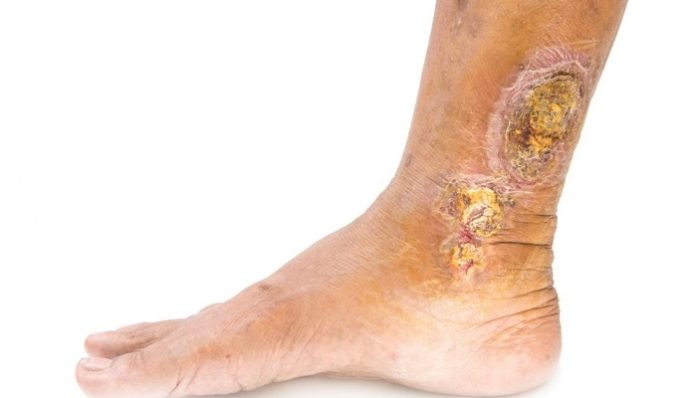Leg ulcers are common and often painful wounds that can form on the leg. They can be caused by a number of factors, including circulation problems, injury, or infection. Treatment for leg ulcers typically involves dressings and antibiotics, but in some cases, surgery may also be necessary. In this blog post, we will discuss the causes and treatment of leg ulcers.
Leg ulcers are open sores that can occur on the legs, usually as a result of an underlying condition that impairs blood circulation. The most common underlying condition is venous insufficiency, which occurs when the valves in the veins that normally allow blood to flow back to the heart become damaged or weakened. This can cause blood to pool in the veins, leading to swelling and eventually ulceration.
Other less common causes of leg ulcers include arterial insufficiency, certain types of infection, and certain skin conditions. Treatment for leg ulcers typically includes dressings and bandages to promote healing, as well as medications to manage any underlying conditions. In some cases, surgery may also be necessary. If you have concerns about your legs, consult a doctor at a certified Dublin vein clinic.
Leg ulcers are areas of skin breakage that fail to heal properly. They are usually found on the lower leg, just above the ankle. The most common symptom of a leg ulcer is a break in the skin that won’t heal. This can happen for a variety of reasons, including poor blood circulation and venous insufficiency. Other symptoms may include inflammation, redness, and pain.
While most leg ulcers heal on their own, some can become infected or lead to other complications. For example, an ulcer that is left untreated may get worse and eventually require surgery. In addition, leg ulcers can cause pain and make it difficult to walk or stand for long periods of time. In rare cases, they may even lead to amputation. Because of this, it is important to see a doctor as soon as possible if you develop a leg ulcer. With prompt treatment, the majority of leg ulcers will heal without any problems.
Treatment for leg ulcers typically involves a combination of wound care and compression therapy. Wound care involves keeping the wound clean and covered to prevent infection, while compression therapy helps to reduce swelling and promote healing. In some cases, surgery may also be necessary to treat underlying conditions that contribute to the development of leg ulcers. With proper treatment, most leg ulcers will heal within four to six weeks.
Leg ulcers can be painful and difficult to treat. In most cases, the first step is to clean the wound. This can be done with warm water and neutral soap. Be sure to dry the area completely afterward. Next, apply an antibiotic ointment to help prevent infection. Finally, cover the wound with a sterile bandage or dressing. If the ulcer does not heal within a few weeks, it may be necessary to see a doctor for additional treatment. Leg ulcers can be a nuisance, but with proper care, they will eventually heal.
While there are several different treatment options for leg ulcers, compression therapy is often considered the gold standard. Compression therapy involves wearing special stockings or bandages that apply gentle pressure to the legs. This helps to reduce swelling and improve circulation, which can speed up healing. In addition, compression therapy is typically very safe and effective, making it an excellent treatment option for most people with leg ulcers.
Specialized dressings are often used to treat leg ulcers, as they can help to speed up the healing process. These dressings typically contain active ingredients that promote healing, such as growth factors or antibiotics. In addition, they provide a barrier that helps to keep the wound clean and free from infection.






















